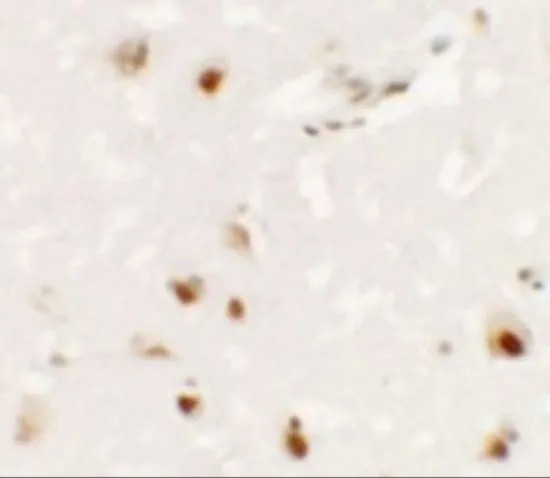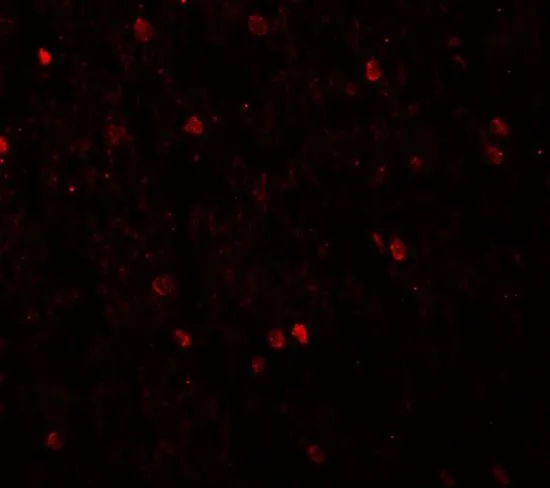
IHC-P analysis of human brain tissue using GTX31480 SHANK3 antibody. Working concentration : 2.5 microg/ml
SHANK3 antibody
GTX31480
ApplicationsWestern Blot, ELISA, ImmunoHistoChemistry, ImmunoHistoChemistry Paraffin
Product group Antibodies
ReactivityHuman, Mouse
TargetSHANK3
Overview
- SupplierGeneTex
- Product NameSHANK3 antibody
- Delivery Days Customer9
- Application Supplier NoteWB: 1 microg/mL. IHC-P: 2.5 microg/mL. *Optimal dilutions/concentrations should be determined by the researcher.Not tested in other applications.
- ApplicationsWestern Blot, ELISA, ImmunoHistoChemistry, ImmunoHistoChemistry Paraffin
- CertificationResearch Use Only
- ClonalityPolyclonal
- Concentration1 mg/ml
- ConjugateUnconjugated
- Gene ID85358
- Target nameSHANK3
- Target descriptionSH3 and multiple ankyrin repeat domains 3
- Target synonymsDEL22q13.3; proline rich synapse associated protein 2; PROSAP2; PSAP2; SCZD15; SH3 and multiple ankyrin repeat domains protein 3; shank postsynaptic density protein; shank3 postsynaptic density protein; SPANK-2
- HostRabbit
- IsotypeIgG
- Protein IDQ9BYB0
- Protein NameSH3 and multiple ankyrin repeat domains protein 3
- Scientific DescriptionThis gene is a member of the Shank gene family. Shank proteins are multidomain scaffold proteins of the postsynaptic density that connect neurotransmitter receptors, ion channels, and other membrane proteins to the actin cytoskeleton and G-protein-coupled signaling pathways. Shank proteins also play a role in synapse formation and dendritic spine maturation. Mutations in this gene are a cause of autism spectrum disorder (ASD), which is characterized by impairments in social interaction and communication, and restricted behavioral patterns and interests. Mutations in this gene also cause schizophrenia type 15, and are a major causative factor in the neurological symptoms of 22q13.3 deletion syndrome, which is also known as Phelan-McDermid syndrome. Additional isoforms have been described for this gene but they have not yet been experimentally verified. [provided by RefSeq, Mar 2012]
- ReactivityHuman, Mouse
- Storage Instruction-20°C or -80°C,2°C to 8°C
- UNSPSC12352203


